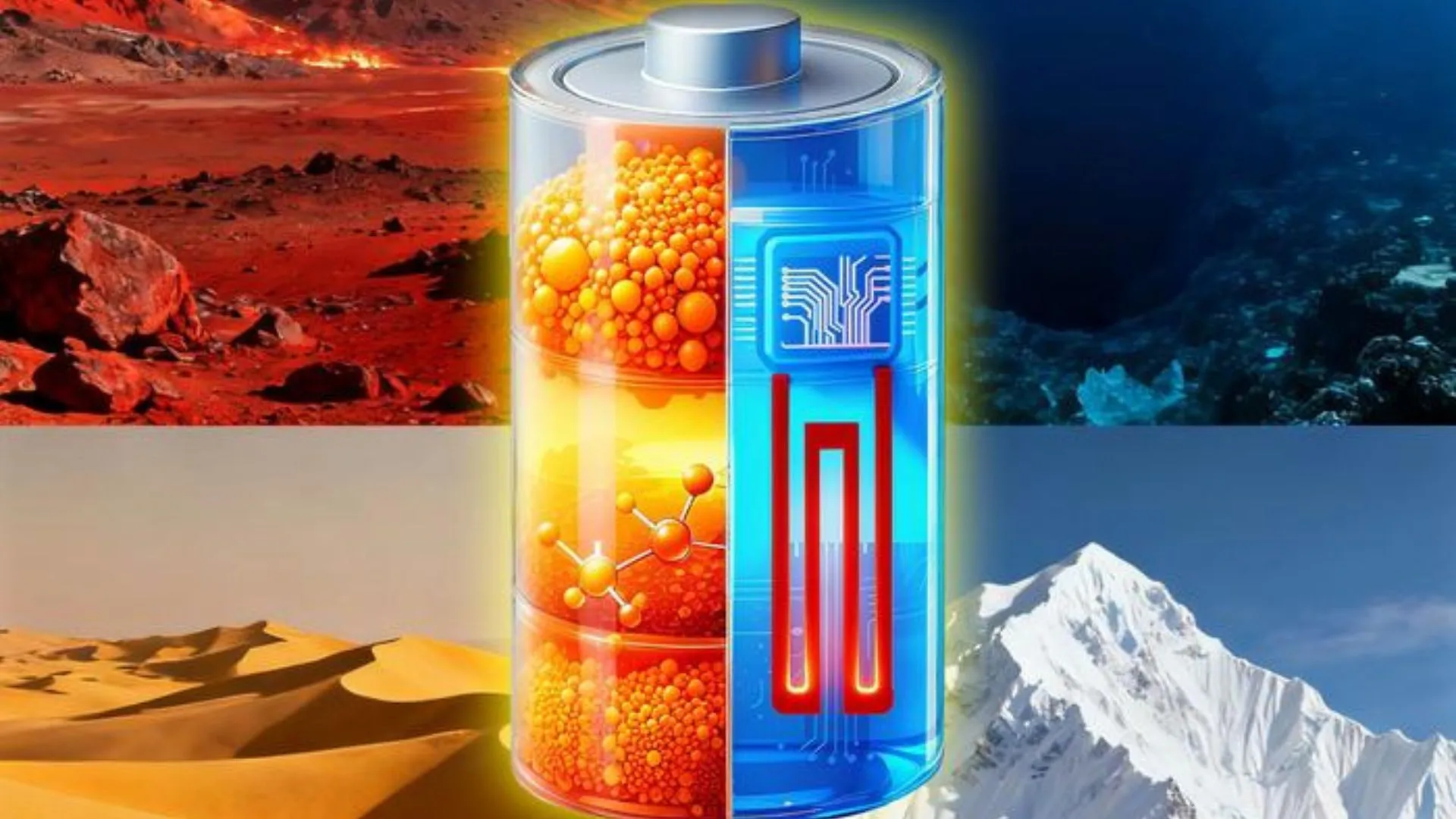Copyright Interesting Engineering

Researchers at Penn State have proposed a novel design for a lithium-ion (Li) battery. It could address the long-standing performance and stability issues of standard Li batteries in extreme temperatures. The design, dubbed the All-Climate Battery (ACB), was developed to fix a core flaw in standard Li batteries, which were only optimized to work efficiently around 25°C or slightly above. That’s why these standard batteries struggle in modern applications, such as electric vehicles, data centers, and extreme environments. The battery tech loses power when cold and faces instability issues when hot. “Now that these batteries have been integrated into electric vehicles, data centers, and large-scale systems that can run very hot, this stable operational temperature has become awkward for manufacturers to work around,” said Chao-Yang Wang, professor of mechanical engineering, chemical engineering, and principal investigator on the project. Professor Wang emphasized that addressing the fundamental design flaw of Li batteries is crucial for advancing large-scale, power-intensive systems. The current solution — bulky, power-intensive external heating and cooling — is inefficient and only offers a limited operational range of -30°C to 45°C. A dual-strategy design The Penn State team overcame the performance trade-off between cold operation and hot stability by implementing a novel dual-strategy approach. Researchers plan to improve the ACB by modifying its internal components using two techniques. First, the electrodes and electrolytes are adjusted to handle high temperatures, specifically replacing the volatile liquid electrolyte used in traditional Li batteries. This focuses on achieving high stability and safety in hot environments. To manage cold temperatures, an internal heating structure composed of a thin film of nickel foil (approximately 10 microns thick) will be added to the battery. This heater, powered by the battery itself, will enable the system to warm up and enhance performance in cold environments, eliminating the need to compromise material stability for cold-weather operation. Wang explained that integrating thermal management directly into the battery reduces space, power consumption, and maintenance needs. It will lead to major savings for large facilities, such as data centers, that utilize thousands of batteries. Wide temperature usage The ACB is expected to reliably operate across a much wider temperature range, from -50°C to 75°C. This wide range makes ACBs viable for applications previously considered infeasible for Li batteries, such as devices in deserts or polar regions. Professor Wang suggests that with further development and testing, ACBs could be optimized to operate reliably at temperatures as high as 70°C to 85°C. This continued improvement may help support the growing scale of high-demand systems, such as advanced data centers and electric vehicles, that depend on battery power storage. “Our society is only growing more power-dependent, and shows no sign of slowing down,” Wang concluded. “As we continue to develop technology like artificial intelligence, data centers, or highly advanced drones and electric vehicles that require tons of power, we will have to continue improving the batteries that power them.”



